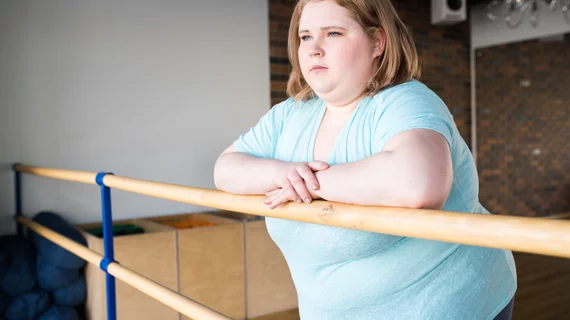Physician bias against overweight and obese patients is not only prevalent in today’s medical landscape, according to an analysis published in JAMA Feb. 20—it could also be overshadowing quality care and driving some of those patients further from the doctor’s office.
Author Rita Rubin, MA, calls weight “the last acceptable bias, because, unlike most other characteristics or conditions, it is one over which individuals are perceived as having control.” But the issue is often much more complex than counting calories or clocking time on the treadmill, and physicians aren’t exempt from an inherent social bias against those who are overweight.
“There is not a single patient with significant obesity who has not experienced weight bias, whether it’s comments from doctors or nurses, the way waiting rooms are set up or privacy issues,” Yoni Freedhoff, MD, an obesity specialist at the University of Ottawa, told Rubin. “Weight bias is ubiquitous in society as a whole. Doctors are part of society.”
A 2015 review of literature on weight bias in healthcare found considerable evidence that negative attitudes and stereotypes about people with obesity influence physicians’ judgment, behavior, patient perceptions and even decision-making, Rubin said. Research has found doctors show less respect for overweight patients, spend less time with them in the exam room and feel justified to address excess weight “every chance they get.”
Mayo Clinic researcher Sean Phelan, PhD, said since obesity is a risk factor for so many other diseases and conditions, physicians will bring up the topic in appointments that have nothing to do with weight.
“I don’t disagree that it’s important, but the overwhelming evidence is that by recommending weight loss to your patient in a primary care appointment when that’s not what they’re there for does not help them,” he told Rubin. “It’s potentially doing harm. Patients who are obese are avoiding that follow-up appointment because they didn’t lose weight, and they said they were going to.”
Physicians might also be more biased against obesity than the general population, since they’re less likely to be overweight than other members of society. A study from 2017 suggested weight bias might even date back to providers’ undergraduate years, finding trainees who reported losing weight and keeping it off were more critical toward patients struggling to do the same.
Rebecca Puhl, PhD, deputy director of the Rudd Center for Food Policy and Obesity at the University of Connecticut, said medical schools need to start teaching their students to talk to patients about weight-related health issues without stigmatization. Some schools have a head start—Johns Hopkins embedded an ethics session in a mandatory course, and the Mayo Clinic spends two afternoons a year covering the complexities of obesity and malnutrition.
“If we look at medical school curricula, obesity does not get very much airtime, and that is a problem,” Puhl said. “We need more content...on obesity and nutrition so healthcare providers understand just how complex body weight is. Not only is obesity and nutrition not getting enough attention, but weight stigma is completely off the radar.”
Mayo Clinic endocrinologist Manpreet Mundi, MD, said creating a safe space for overweight patients will be important moving forward. For example, physicians should ask permission to bring up the topic of weight and use less stigmatizing language—“unhealthy weight” instead of “morbidly obese” or “fat.”
Other minor changes are quicker fixes, like moving scales from hallways to private rooms, ensuring there are sturdy armless chairs in waiting rooms and making sure hospitals have appropriately sized medical equipment.
“If we don’t create a safe space for them...they’re not going to come,” Mundi told Rubin. “We can’t help someone who’s not even coming in.”

